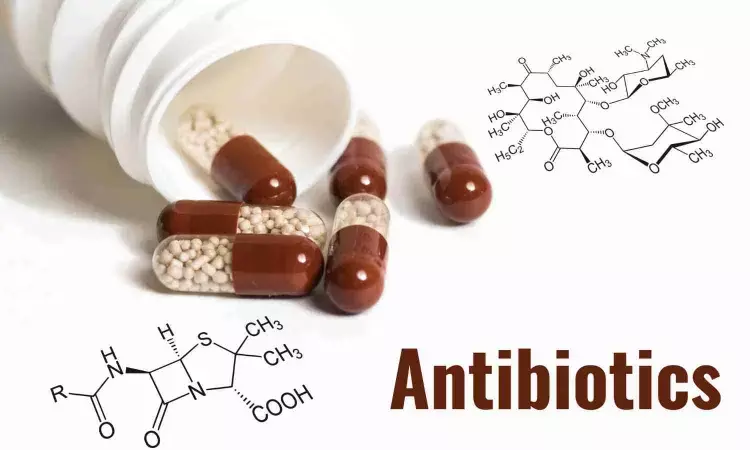- Home
- Medical news & Guidelines
- Anesthesiology
- Cardiology and CTVS
- Critical Care
- Dentistry
- Dermatology
- Diabetes and Endocrinology
- ENT
- Gastroenterology
- Medicine
- Nephrology
- Neurology
- Obstretics-Gynaecology
- Oncology
- Ophthalmology
- Orthopaedics
- Pediatrics-Neonatology
- Psychiatry
- Pulmonology
- Radiology
- Surgery
- Urology
- Laboratory Medicine
- Diet
- Nursing
- Paramedical
- Physiotherapy
- Health news
- Fact Check
- Bone Health Fact Check
- Brain Health Fact Check
- Cancer Related Fact Check
- Child Care Fact Check
- Dental and oral health fact check
- Diabetes and metabolic health fact check
- Diet and Nutrition Fact Check
- Eye and ENT Care Fact Check
- Fitness fact check
- Gut health fact check
- Heart health fact check
- Kidney health fact check
- Medical education fact check
- Men's health fact check
- Respiratory fact check
- Skin and hair care fact check
- Vaccine and Immunization fact check
- Women's health fact check
- AYUSH
- State News
- Andaman and Nicobar Islands
- Andhra Pradesh
- Arunachal Pradesh
- Assam
- Bihar
- Chandigarh
- Chattisgarh
- Dadra and Nagar Haveli
- Daman and Diu
- Delhi
- Goa
- Gujarat
- Haryana
- Himachal Pradesh
- Jammu & Kashmir
- Jharkhand
- Karnataka
- Kerala
- Ladakh
- Lakshadweep
- Madhya Pradesh
- Maharashtra
- Manipur
- Meghalaya
- Mizoram
- Nagaland
- Odisha
- Puducherry
- Punjab
- Rajasthan
- Sikkim
- Tamil Nadu
- Telangana
- Tripura
- Uttar Pradesh
- Uttrakhand
- West Bengal
- Medical Education
- Industry
Outcomes of 7 days and 14 days antibiotic therapy for bloodstream infection comparable: NEJM

A new study published in the New England Journal of Medicine showed that antibiotic therapy for 7 days was not inferior to treatment for 14 days among patients hospitalized with bloodstream infections. An estimated 2.9 million people worldwide die from bloodstream infections each year, making it one of the most serious forms of bacterial diseases. Although the recommended period of antibiotic therapy is 14 days or more, nothing is known about how long it should last for bloodstream infections. Shorter antibiotic treatments raise the possibility of clinical failure or infection recurrence.
The BALANCE Investigators from the University of Toronto decided to find out if the mortality rates following 7 and 14 days of antibiotic use were comparable. Also, they expected that shortened antibiotic duration might lower adverse events, antibiotic exposure, and resistant organism infections.
This research randomly allocated hospitalized patients with bloodstream infections, including the ones in the intensive care unit [ICU], to receive antibiotic therapy for 7 or 14 days. The treating team made decisions about the choice, dosage, and route of antibiotics. The patients with severe immunosuppression, foci that needed ongoing care, single cultures that could have been contaminated, or cultures that produced Staphylococcus aureus were not included. With a noninferiority margin of 4 percentage points, the main outcome was mortality from any cause within 90 days after the bloodstream infection diagnosis.
The intention-to-treat analysis comprised a total of 3608 randomly assigned patients from 74 hospitals across 7 countries where 1814 patients received antibiotic therapy for 7 days, and 1794 patients received antibiotic treatment for 14 days. 45.0% of patients were on hospital wards and 55.0% were in the intensive care unit at the time of inclusion. 75.4% of infections were contracted in the community, 13.4% in hospital wards, and 11.2% in intensive care units.
The urinary tract (42.2%), abdomen (18.8%), lung (11.0%), vascular catheters (6.3%), and skin or soft tissue (5.2%) were the most frequent sites of bacteremia. By 90 days, 286 patients (16.1%) who had received antibiotics for 14 days and 261 patients (14.5%) who had received antibiotics for 7 days had passed away, demonstrating that the shorter treatment time was not inferior.
10.7% of patients in the 14-day group and 23.1% of patients in the 7-day group received treatment for longer than the allotted amount of time. Overall, antibiotic therapy for 7 days was comparable to treatment for 14 days in hospitalized patients with bloodstream infections.
Source:
(2024). Antibiotic Treatment for 7 versus 14 Days in Patients with Bloodstream Infections. In New England Journal of Medicine. Massachusetts Medical Society. https://doi.org/10.1056/nejmoa2404991
Neuroscience Masters graduate
Jacinthlyn Sylvia, a Neuroscience Master's graduate from Chennai has worked extensively in deciphering the neurobiology of cognition and motor control in aging. She also has spread-out exposure to Neurosurgery from her Bachelor’s. She is currently involved in active Neuro-Oncology research. She is an upcoming neuroscientist with a fiery passion for writing. Her news cover at Medical Dialogues feature recent discoveries and updates from the healthcare and biomedical research fields. She can be reached at editorial@medicaldialogues.in
Dr Kamal Kant Kohli-MBBS, DTCD- a chest specialist with more than 30 years of practice and a flair for writing clinical articles, Dr Kamal Kant Kohli joined Medical Dialogues as a Chief Editor of Medical News. Besides writing articles, as an editor, he proofreads and verifies all the medical content published on Medical Dialogues including those coming from journals, studies,medical conferences,guidelines etc. Email: drkohli@medicaldialogues.in. Contact no. 011-43720751


